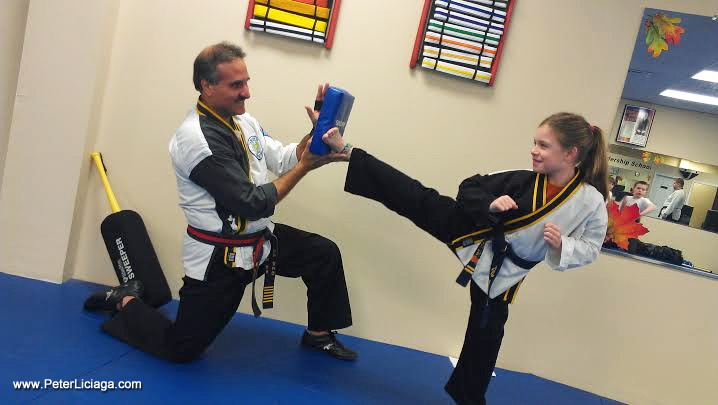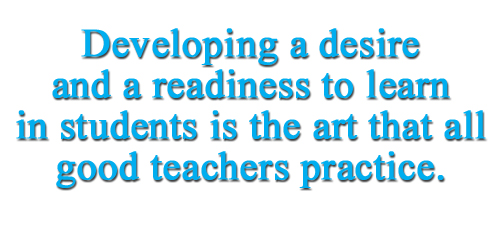
“When the Student is Ready the Teacher Will Appear”
This saying holds a key universal truth about learning. Regardless of age, social class or ethnic background, information can be presented to a student, and then the student must choose to learn what is set before them.
Developing a desire and a readiness to learn in students is the art that all good teachers practice.
The idea of cramming information into the minds of students so that they can regurgitate it for testing purposes effects minimal change – perhaps even creating a disrespect for the learning process itself.
 For example, dictating to a student that they will follow a martial arts form to help increase concentration, improve awareness, focus, balance and make them better martial artist is not likely to elicit a positive response.
For example, dictating to a student that they will follow a martial arts form to help increase concentration, improve awareness, focus, balance and make them better martial artist is not likely to elicit a positive response.
In the same way, when a teacher asks a student about their life, a new dynamic develops. The dialogue may sound something like, “So tell me, what are your hobbies? What do you love to do that makes you smarter, stronger and happier?” The student might answer in a sly way at first, but if the teacher cares enough to notice the student’s innate talents, a connection can be nurtured. As the student begins talking about what they enjoy doing, the teacher could then ask what the student needs to improve. The end of the conversation may have the student saying he needs to be in good cardiovascular shape, and that he needs good balance and coordination. He might even say that he needs to stop getting so mad when he makes a mistake.
Keeping in this same model of educationally guided inquiry, the teacher may ask the student if he is ready to learn a few unique ways to get ahead and excel, and the student’s response may sound like, “Yeah, let’s get going, what can I do?”
It becomes easier for the teacher to say, “Let me show you how martial arts can help increase your concentration, improve your grades and make you a better athlete. Let’s start with deep breathing to help you keep focused, improve your running and help you manage emotions when you get upset after making a mistake. The student has become ready to learn of his own will and desire. He is empowered by his own process of self-discovery, brought on by the direct questions of the teacher. The teacher has done his job because the he helped the student realize that he was ready to learn.
This process is not a rote formula to be disseminated to the masses – it is more a subtle interplay of intuition and inquiry. There are no outlines to follow or set number of questions to ask. The teacher must genuinely wish to seek first to understand who the student is and what they wish to become. Like yeast to flour, the teacher is a catalyst for the student to discover their goals and then set out a path to achieve them.
Think about it from this perspective: would you rather have a teacher who knows everything or a teacher who sincerely cares about your well-being?

